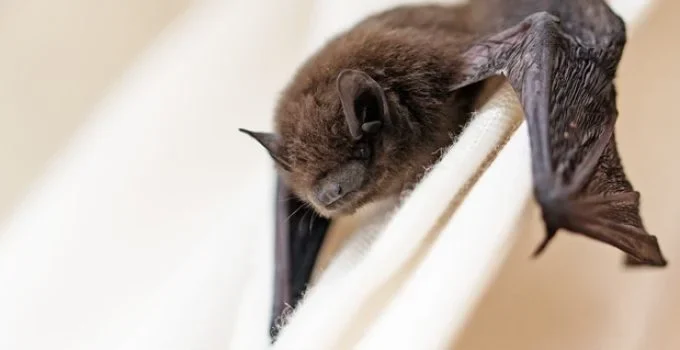Can Bats Walk?
Bats have the ability to walk, but only two species are known to walk regularly. Of the more than 1,400 species of bats worldwide, many can walk, but most do so clumsily and rarely take advantage of the ability. Though the bat has the potential to walk, its unique anatomy makes it extremely difficult. However, a few bat species have evolved adaptations perfectly suited for walking.
Lesser Short-Tailed Bat
The lesser short-tailed bat is native to New Zealand, and though it does fly like other bats to catch its prey, it has adapted to ground hunting and does so by walking. . . or more accurately. . .agile crawling.
This bat’s diet consists of flying and non-flying arthropods, pollen, and other plant material, much of which is gathered at ground level. Rather than using a bat’s unique, sonar-like echolocation to locate its prey, the Lesser Short-Tailed Bat seems to hunt its ground prey similarly to other mammals, using its senses and pouncing on it rather than catching it in flight.
Unlike most other bats that have difficulty walking, this bat is equipped with strong hind legs, feet, and claws with talons and has the ability to fold in its wings protectively and use them in locomotion, making this species extremely agile on the ground.
Experts theorize that this walking behavior evolved due to the absence of predators, which now makes it vulnerable to predation by rats and feral cats that have since been introduced to New Zealand.
National Geographic has captured this walking bat on video. (Watch Now)
The Unique Vampire Bat
Unlike many other bat species, the vampire bat is an excellent walker and uses this ability to land near its prey and slowly walk over to it. Native to temperate zones, the vampire bat subsists solely on blood, preying on livestock and wild animals. The bat usually approaches its prey while sleeping and uses it to walk silently to approach it from the ground. The bat’s nose is equipped with a heat sensor that allows it to find the spot where the blood is closest to the skin’s surface. It will then make an incision in the skin and begin sucking the blood. Because the bat approaches the prey from the ground and is quite small in size, the prey will often sleep right through the feeding.
This Bat Actually Runs
Of the three types of vampire bats, Cornell University researchers discovered that the common vampire bat, Desmodus rotundus, can actually run. When put to a treadmill test, the researchers found that they could advance from a walk to a run in a very short time. Interestingly, these running bats did not use their hind legs to power propulsion like most other animals. Instead, they use their powerful wings to propel forward, a movement similar to that of a gorilla.
Resources
- Jones, G., et al. (2003). “Mysterious Mystacina: how the New Zealand short-tailed bat (Mystacina tuberculata) locates insect prey”. Journal of Experimental Biology 206 (23): 4209–4216.doi:10.1242/jeb.00678
- J. Daniel (1976) Feeding by the short‐tailed bat (Mystacina tuberculata) on fruit and possibly nectar, New Zealand Journal of Zoology, 3:4, 391-398, DOI: 10.1080/03014223.1976.9517927
- “New Zealand Lesser Short-tailed Bat.” Edge of Existence. N.p., n.d. Web 30 Oct. 2014. <http://www.edgeofexistence.org/mammals/species_info.php?id=56>
- “Cornell News: vampire bats run.” Cornell Chronicle Online. N.p., n.d. Web. 17 Oct. 2011. http://www.news.cornell.edu/stories/March05/Riskin.bats.snd.html
- “The illustrated story of the Vampire bat.” University of Pittsburgh. N.p., n.d. Web. 17 Oct. 2011. <http://www.pitt.edu/~slavic/courses/vampires/images/bats/vambat.html>
